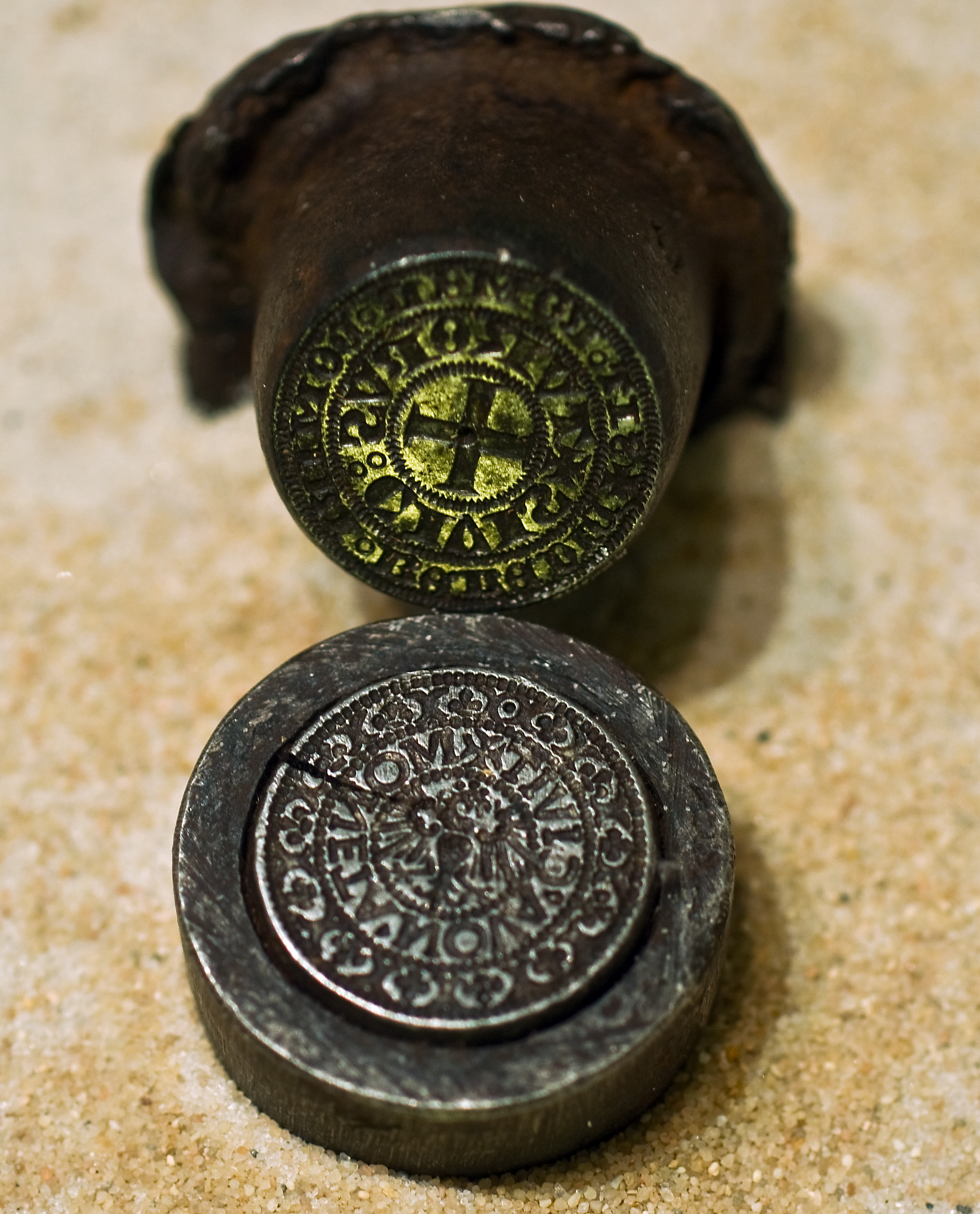Medalist on:
[Wikipedia]
[Google]
[Amazon]
 A medalist (or medallist) is an artist who designs
A medalist (or medallist) is an artist who designs
 Artistic medals have been produced since the late
Artistic medals have been produced since the late
medal
A medal or medallion is a small portable artistic object, a thin disc, normally of metal, carrying a design, usually on both sides. They typically have a commemorative purpose of some kind, and many are presented as awards. They may be int ...
s, plaquette
A plaquette (, ''small plaque'') is a small low relief sculpture in bronze or other materials. These were popular in the Italian Renaissance and later. They may be commemorative, but especially in the Renaissance and Mannerist periods were of ...
s, badge
A badge is a device or accessory, often containing the insignia of an organization, which is presented or displayed to indicate some feat of service, a special accomplishment, a symbol of authority granted by taking an oath (e.g., police and ...
s, metal medallions, coin
A coin is a small, flat (usually depending on the country or value), round piece of metal or plastic used primarily as a medium of exchange or legal tender. They are standardized in weight, and produced in large quantities at a mint in order ...
s and similar small works in relief
Relief is a sculptural method in which the sculpted pieces are bonded to a solid background of the same material. The term '' relief'' is from the Latin verb ''relevo'', to raise. To create a sculpture in relief is to give the impression that th ...
in metal. Historically, medalists were typically also involved in producing their designs, and were usually either sculptors or goldsmith
A goldsmith is a metalworker who specializes in working with gold and other precious metals. Nowadays they mainly specialize in jewelry-making but historically, goldsmiths have also made silverware, platters, goblets, decorative and servicea ...
s by background. In modern times, medalists are mostly primarily sculptors of larger works, but in the past the number of medals and coins produced were sufficient to support specialists who spent most of their career producing them. From the 19th century, the education of a medalist often began with time as an engraver, or a formal education in an academy
An academy (Attic Greek: Ἀκαδήμεια; Koine Greek Ἀκαδημία) is an institution of secondary or tertiary higher learning (and generally also research or honorary membership). The name traces back to Plato's school of philosop ...
, particularly modeling and portraiture. On coins, a mark or symbol signifying the medalist as the original designer was often included in a hidden location and is not to be mistaken for the symbol of the mint master. Artistic medals and plaquettes are often signed prominently by the artist.
Background
 Artistic medals have been produced since the late
Artistic medals have been produced since the late Renaissance
The Renaissance ( , ) , from , with the same meanings. is a period in European history marking the transition from the Middle Ages to modernity and covering the 15th and 16th centuries, characterized by an effort to revive and surpass ide ...
period, and, after some classical precedents and Late Medieval revivals, the form was essentially invented by Pisanello
Pisanello (c. 1380/1395c. 1450/1455), born Antonio di Puccio Pisano or Antonio di Puccio da Cereto, also erroneously called Vittore Pisano by Giorgio Vasari, was one of the most distinguished painters of the early Italian Renaissance and Quatt ...
, who is credited with the first portrait medal, which has remained a very popular type. He cast them like bronze sculptures, rather than minting them like coins.
Medalists are also often confusingly referred to as "engravers" in reference works, referring to the "engraving" of dies, although this is often in fact not the technique used; however many also worked in engraving
Engraving is the practice of incising a design onto a hard, usually flat surface by cutting grooves into it with a burin. The result may be a decorated object in itself, as when silver, gold, steel, or glass are engraved, or may provide an in ...
, the technique in printmaking.
The production of coins is accomplished through the use of either a die for minting coins by hammering or, in modern times, milling or, mostly in prehistoric times and also in Asia, a mold for casting
Casting is a manufacturing process in which a liquid material is usually poured into a mold, which contains a hollow cavity of the desired shape, and then allowed to solidify. The solidified part is also known as a ''casting'', which is ejecte ...
the desired object. Artistic medals and plaquettes have mostly been produced by lost wax casting
Lost-wax casting (also called "investment casting", "precision casting", or ''cire perdue'' which has been adopted into English from the French, ) is the process by which a duplicate metal sculpture (often silver, gold, brass, or bronze) is ...
.
The design for the coin faces were originally engraved into the coin dies. It was necessary to use a burin to engrave the designs directly into the die inverted (i.e. raised areas of finished coin were hollowed out on the die) and as a mirror image so that the finished coin appeared correct. This resulted in the early medalists being called steel-chiselers. Medalists who were contracted by the state to produce the coins and medallions for the mint
MiNT is Now TOS (MiNT) is a free software alternative operating system kernel for the Atari ST system and its successors. It is a multi-tasking alternative to TOS and MagiC. Together with the free system components fVDI device drivers, XaAE ...
were often given official state titles. In addition to their state contracts, medalists were also allowed to earn income through private commissions for medals.
See also
* List of medallistsReferences
External links
* {{Authority control Numismatics Exonumia *